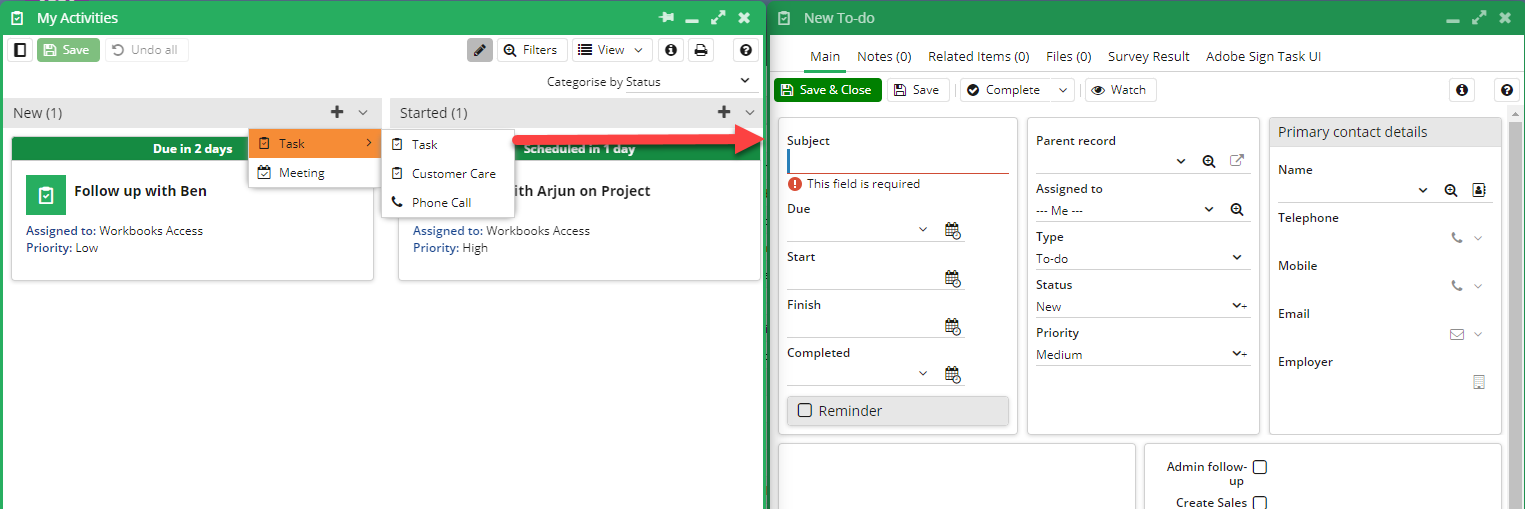Kanban View
Kanban Overview
Sometimes it makes sense to see your Activity records in the context of a Kanban Board rather than a grid. The Workbooks Kanban View serves to visualise Activities based on their stage or status to allow greater coordination and overview. The Kanban view is available for use in any Activities grid – whether that be within a record’s Landing Page, or within the Activities tab of an Opportunity, Marketing Campaign or Transaction Document.
NOTE: Kanban View is only available to users with Pro Licences (CRM/Business Pro) as well as those who have purchased the additional ‘Projects’ Extension.
You may find particular use for the Kanban View within your Project Tasks. Using the Project Task tab on the Project record in conjunction with Kanban allows a 360o view of the project to be available to users at all times.
When using the Kanban View you can:
- Arrange your Activities visually according to a Picklist of your choosing
- Apply filters to limit the records shown in the Kanban (just as you would in grid view)
- Choose which fields are displayed from the record on the Kanban entry
- Expose/Hide specific columns from the Kanban
- Create new records based on the headers selected
- Drag and Drop Activities between columns to make dynamic changes to your records
Switching to Kanban View
Switching from a grid view to the Kanban View is easy. Click View on the top right of the Landing Page and then select View as Kanban:
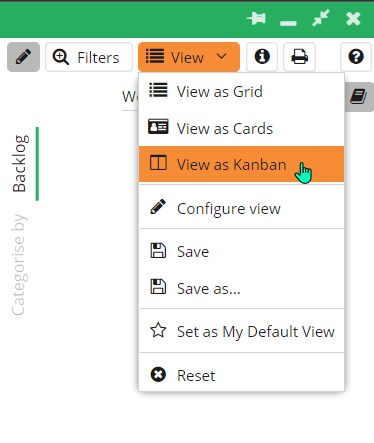
NOTE: When you first switch to Kanban View, Workbooks will split the Activities categorised by Status.
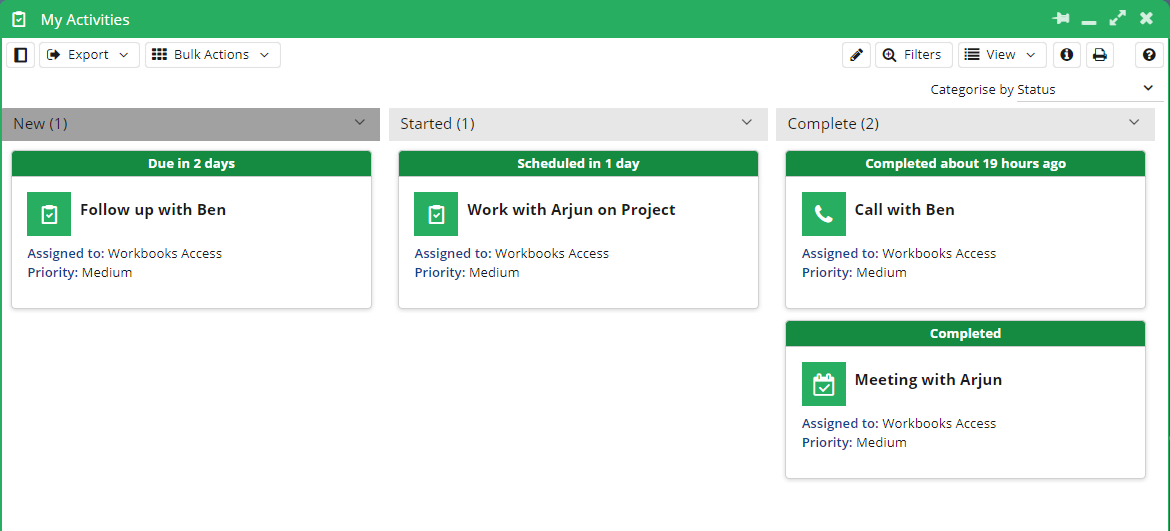
Customising your Kanban View
A Kanban can be set as the default view for the Activities Landing Page just as you can for a grid view. This means that when you open a Landing Page, you will see a Kanban view of your records without having to switch to it manually each time. For more information on how to do this, see here.
Tip
Remember to save the Kanban view once changes have been made, as otherwise the view will return to the default settings!
You are able to customise the records that are shown on the Kanban by adding a filter in the same way as you can for a grid view. For example, you may not be interested in Activity records that are assigned to a particular user. Using the filtering functionality, you can omit these results from your Kanban view. See here for more information.
Kanban View allows for quick, on the fly amendments to your column widths. Simply mouse over the space between two columns until your cursor changes to a double sided arrow and drag your cursor one way or the other to extend/contract the column appropriately
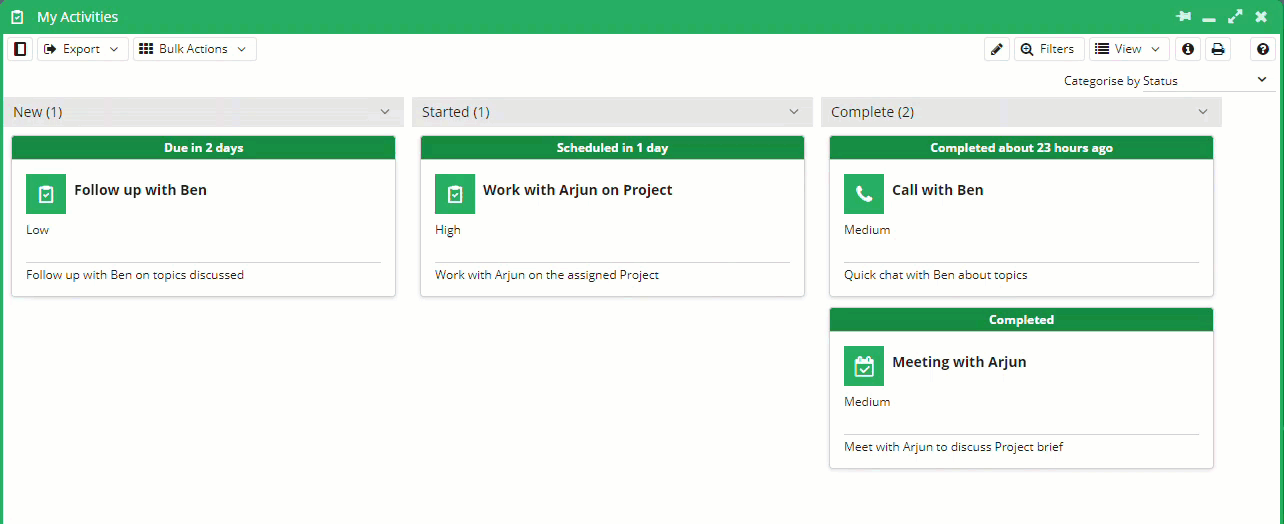
Categorising your Kanban View;
The Kanban View allows you to arrange your records by a Picklist of your choosing from the Activity record. For example, when looking at the ‘My Open Activities’ Landing Page, you may choose to display the records by priority instead of status. Simply navigate to the top right of the window and select the new header for the records to be split by:

NOTE: When you select a new field to categorise your view by, Workbooks dynamically updates the Kanban view and does not require you to reload the page.

By default, only certain values in the selected picklist will be given a column in the Kanban. To hide/expose columns simply press the small downwards arrow next to any of the column headers and check/uncheck the corresponding checkbox:

Changing the Order of Your Kanban Columns
When switching to Kanban for the first time you may want to change the order of your displayed columns. The order in which the Kanban columns appear is based on the order in which the values appear in the respective underlying Picklist. In the above example of Priority, you may want to reverse the order so that ‘Low’ appears leftmost and ‘High’ appears to the right. In this scenario, you will need to navigate to the selected Picklist within configuration and amend the positioning of each value to match the desired order of your Kanban (in this case ‘Low’ set to first and ‘High’ to last). More information on configuring your Picklist can be found here.
Choosing which Fields to Display on a Kanban Entry
To amend which fields are displayed on the Kanban Cards, simply navigate to the top right of the window and the ‘View‘ button. From the dropdown that appears select ‘Configure View‘ and the Edit Card configuration window will appear. Within this screen you can add, arrange and remove fields depending on the information important to your users.
For example, you may want to add the priority and a short synopsis of the Activity to the card. This can be done very simply by dragging the fields from ‘Available fields’ section to where you wish them to appear on the card.

More information on the Cards available to you and their configuration can be found on the Card View page here.
Drag and Drop in Kanban
Whilst in Kanban View, it is possible to drag and drop Activities between the columns present in order to update the information on the underlying record, simply first ensure edit mode is enabled in the top right of the window.
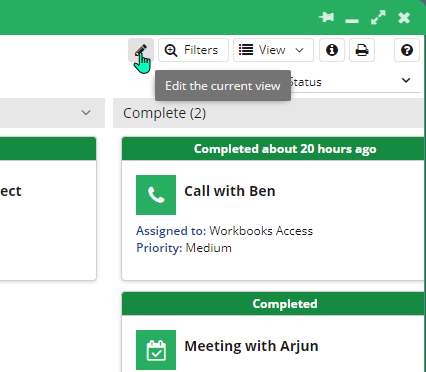
Any changes made in edit mode are not confirmed until the save button is pressed. If at any point you wish to revert all changes made, simply press the Undo all button next to save.

If you prefer to click, you can also change the value of the field by which the view is categorised by using the arrow that appears when you hover over the card:
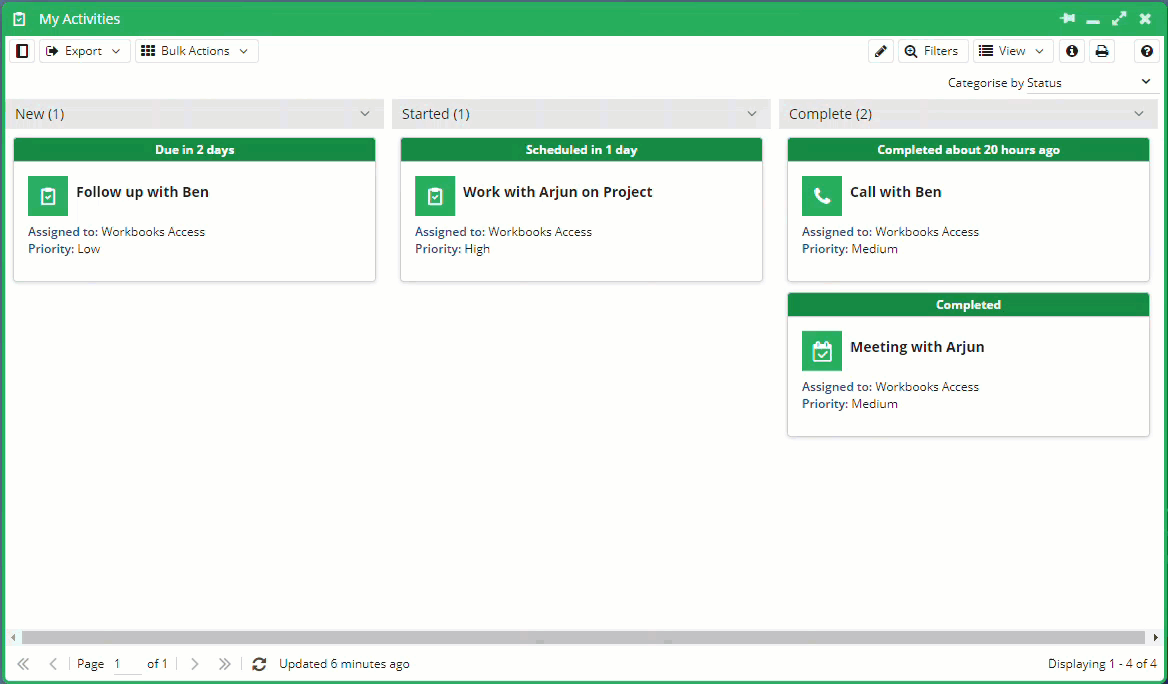
Creating New Records from the Kanban
It’s extremely easy to create new Activities directly from the Kanban itself. Simply press the small ‘+’ at the top right of each column to start the creation of a new Activity record. From the drop down that appears you can select to create any of the Task or Meeting record templates that you currently have set up. By default, these are:
- Meeting
- Task
- Customer Care
- Phone Call
